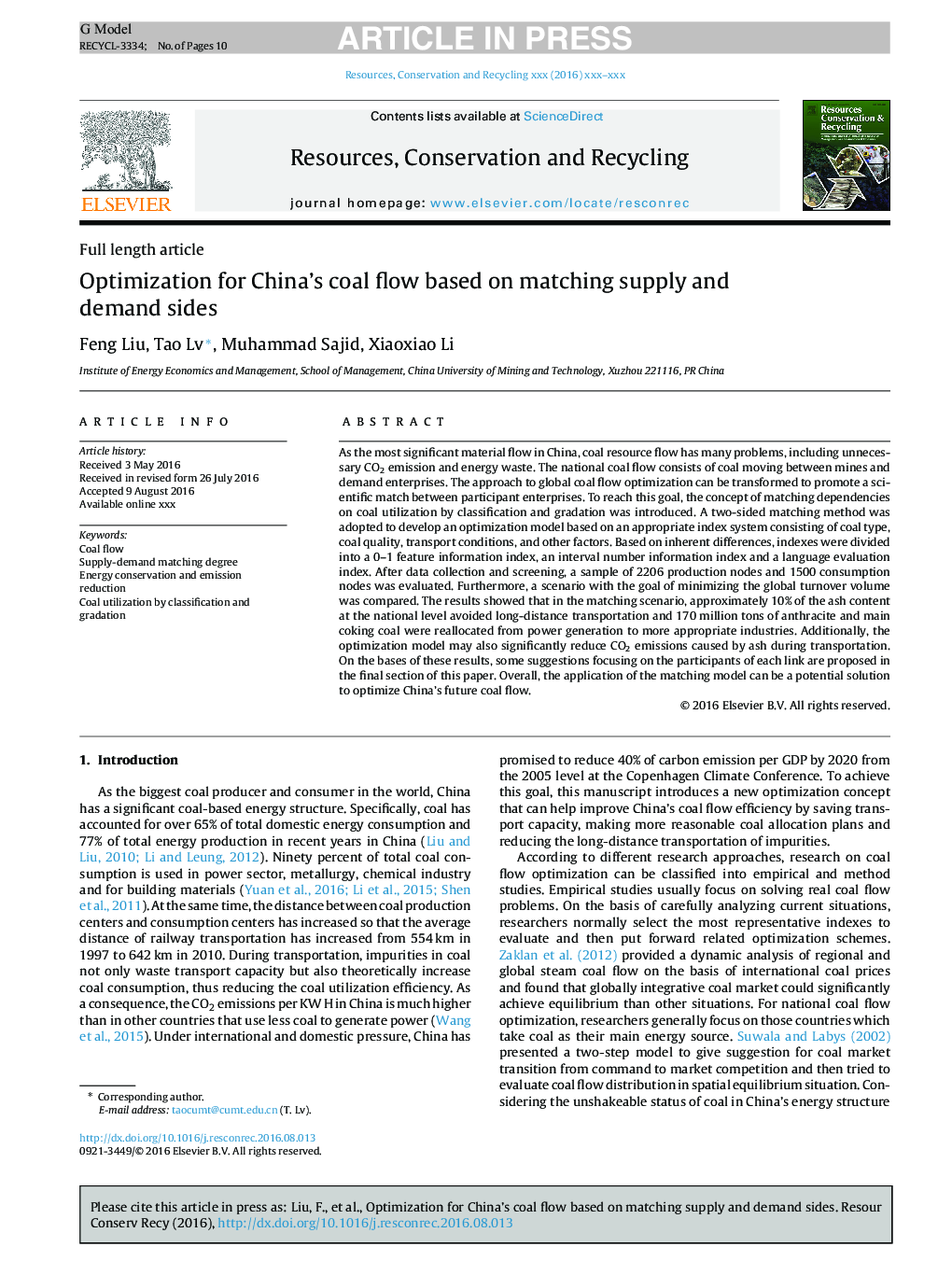| Article ID | Journal | Published Year | Pages | File Type |
|---|---|---|---|---|
| 7494597 | Resources, Conservation and Recycling | 2018 | 10 Pages |
Abstract
As the most significant material flow in China, coal resource flow has many problems, including unnecessary CO2 emission and energy waste. The national coal flow consists of coal moving between mines and demand enterprises. The approach to global coal flow optimization can be transformed to promote a scientific match between participant enterprises. To reach this goal, the concept of matching dependencies on coal utilization by classification and gradation was introduced. A two-sided matching method was adopted to develop an optimization model based on an appropriate index system consisting of coal type, coal quality, transport conditions, and other factors. Based on inherent differences, indexes were divided into a 0-1 feature information index, an interval number information index and a language evaluation index. After data collection and screening, a sample of 2206 production nodes and 1500 consumption nodes was evaluated. Furthermore, a scenario with the goal of minimizing the global turnover volume was compared. The results showed that in the matching scenario, approximately 10% of the ash content at the national level avoided long-distance transportation and 170 million tons of anthracite and main coking coal were reallocated from power generation to more appropriate industries. Additionally, the optimization model may also significantly reduce CO2 emissions caused by ash during transportation. On the bases of these results, some suggestions focusing on the participants of each link are proposed in the final section of this paper. Overall, the application of the matching model can be a potential solution to optimize China's future coal flow.
Related Topics
Physical Sciences and Engineering
Energy
Renewable Energy, Sustainability and the Environment
Authors
Feng Liu, Tao Lv, Muhammad Sajid, Xiaoxiao Li,
